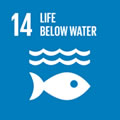Por favor, use este identificador para citar o enlazar a este item:
http://hdl.handle.net/10261/331354COMPARTIR / EXPORTAR:
 SHARE SHARE
 CORE
BASE CORE
BASE
|
|
| Visualizar otros formatos: MARC | Dublin Core | RDF | ORE | MODS | METS | DIDL | DATACITE | |

| Título: | Global patterns and drivers of genetic diversity among marine habitat-forming species |
Autor: | Figuerola, Laura; Barreiro, Aldo; Montero-Serra, Ignasi CSIC ORCID CVN; Pagès-Escolà, Marta; Garrabou, Joaquim CSIC ORCID ; Linares, Cristina CSIC ORCID; Ledoux, J. B. CSIC ORCID | Palabras clave: | Bimodal gradient Latitudinal genetic diversity pattern Macrogenetics Marine benthic ecosystems Marine habitat-forming species Marine protected areas Species genetic diversity correlation |
Fecha de publicación: | jul-2023 | Editor: | John Wiley & Sons | Citación: | Global Ecology and Biogeography 32(7): 1218-1229 (2023) | Resumen: | Aim: Intraspecific genetic diversity is one of the pillars of biodiversity, supporting the resilience and evolutionary potential of populations. Yet, our knowledge regarding the patterns of genetic diversity at macroecological scales, so-called macrogenetic patterns, remains scarce, particularly in marine species. Marine habitat-forming (MHF) species are key species in some of the most diverse but also most impacted marine ecosystems, such as coral reefs and marine forests. We characterize the patterns and drivers of genetic diversity in MHF species and provide a macrogenetic baseline, which can be used for conservation planning and for future genetic monitoring programmes. Location: Global. Time period: Contemporary. Major taxa studied: Bryozoans, hexacorals, hydrozoans, octocorals, seagrasses, seaweeds, sponges. Methods: We analysed a database including genetic diversity estimates based on microsatellites in more than 9,000 georeferenced populations from 140 species, which belong to seven animal and plant taxa. Focusing on expected heterozygosity, we used generalized additive models to test the effect of latitude, taxon, and conservation status. We tested the correlation between the species richness and the genetic diversity. Results: We reveal a significant but complex biogeographic pattern characterized by a bimodal latitudinal trend influenced by taxonomy. We also report a positive species genetic diversity correlation at the scale of the ecoregions. The difference in genetic diversity between protected and unprotected areas was not significant. Main conclusions: The contrasting results between MHF animals and plants suggest that the latitudinal genetic diversity patterns observed in MHF species are idiosyncratic, as reported in terrestrial species. Our results support the existence of shared drivers between genetic and species diversities, which remain to be formally identified. Concerning, these macrogenetic patterns are not aligned from the existing network of marine protected areas. Providing the first macrogenetic baseline in MHF species, this study echoes the call regarding the need to consider genetic diversity in biodiversity assessments and management | Descripción: | 12 pages, 3 figures, supporting information https://doi.org/10.1111/geb.13685.-- Data Availability Statement: The data that support the findings of this study are openly available in ‘CORA. Repositori de Dadeds de Recerca’ at https://doi.org/10.34810/data213 | Versión del editor: | https://doi.org/10.1111/geb.13685 | URI: | http://hdl.handle.net/10261/331354 | DOI: | 10.1111/geb.13685 | ISSN: | 1466-822X | E-ISSN: | 1466-8238 |
| Aparece en las colecciones: | (ICM) Artículos |
Ficheros en este ítem:
| Fichero | Descripción | Tamaño | Formato | |
|---|---|---|---|---|
| Figuerola_et_al_2023.pdf | 7,84 MB | Adobe PDF |  Visualizar/Abrir | |
| Figuerola_et_al_2023_suppl_1.odt | 458,67 kB | OpenDocument Text | Visualizar/Abrir | |
| Figuerola_et_al_2023_suppl_2.odt | 791,91 kB | OpenDocument Text | Visualizar/Abrir | |
| Figuerola_et_al_2023_suppl_3.odt | 23,19 kB | OpenDocument Text | Visualizar/Abrir | |
| Figuerola_et_al_2023_suppl_4.odt | 1,32 MB | OpenDocument Text | Visualizar/Abrir |
CORE Recommender
SCOPUSTM
Citations
2
checked on 20-abr-2024
WEB OF SCIENCETM
Citations
1
checked on 25-feb-2024
Page view(s)
99
checked on 30-abr-2024
Download(s)
118
checked on 30-abr-2024
Google ScholarTM
Check
Altmetric
Altmetric
Este item está licenciado bajo una Licencia Creative Commons



